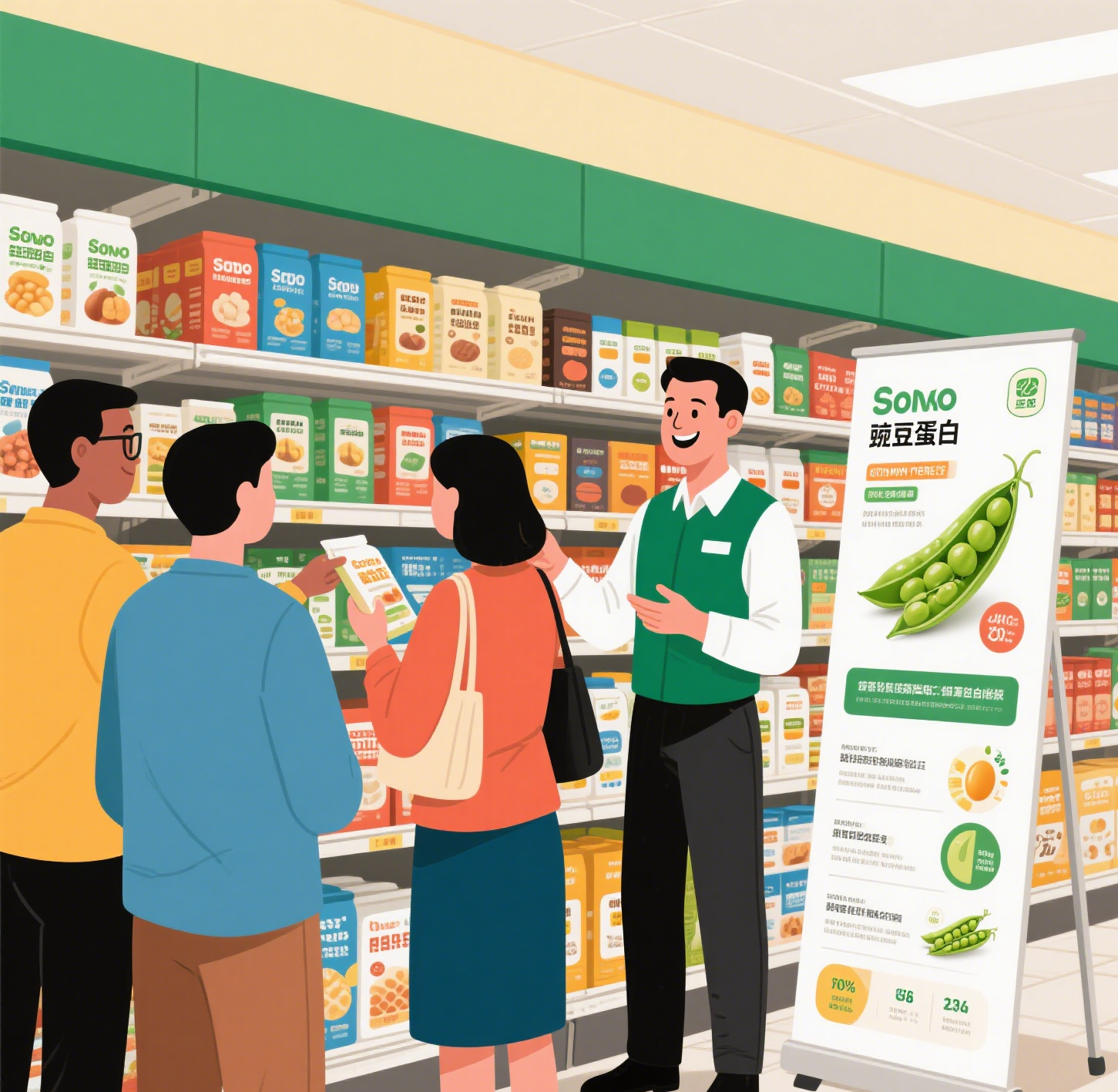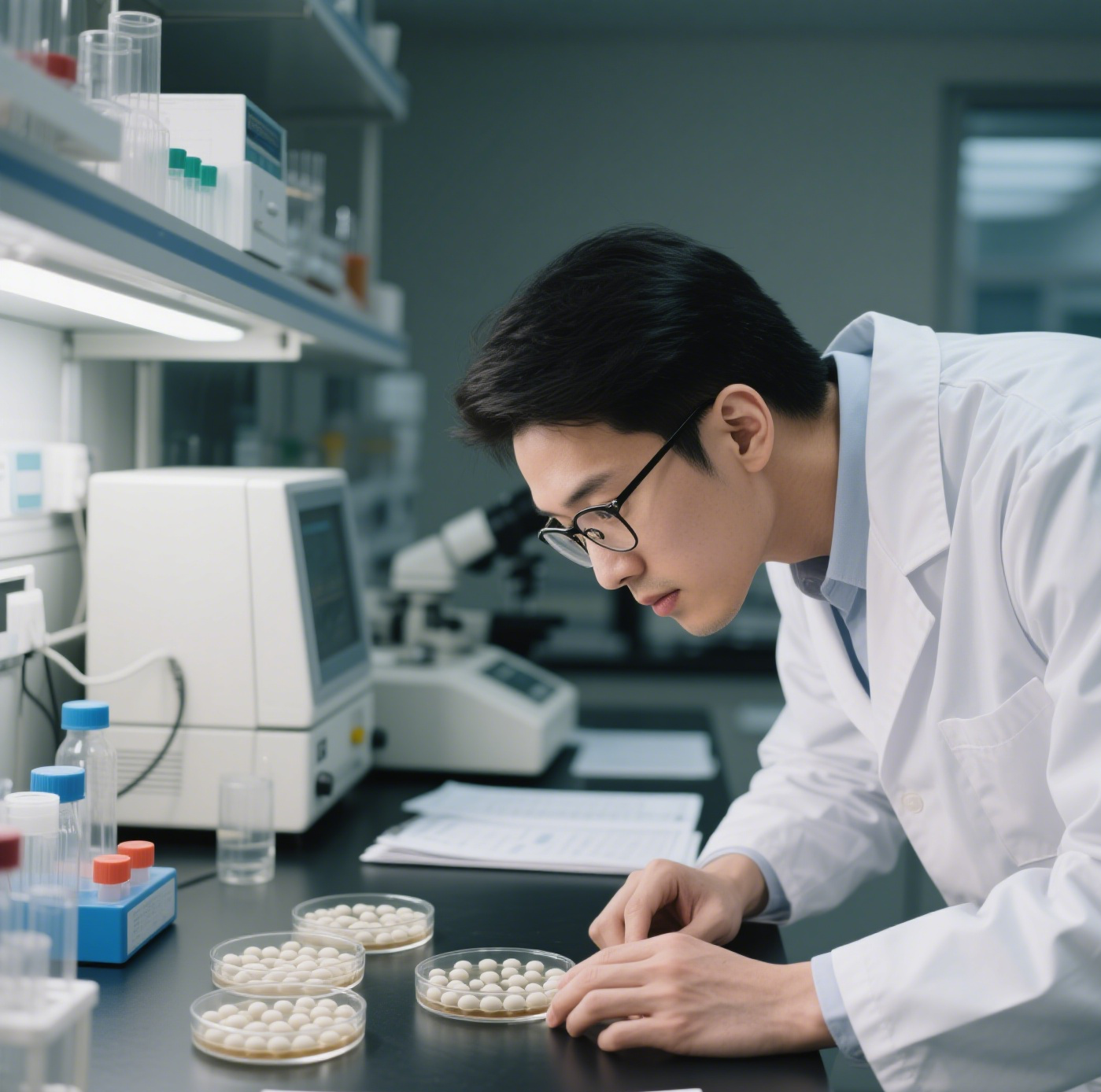Understanding the Journey from Field to Protein Powder
The transformation of humble yellow peas into a concentrated protein powder is a fascinating journey that combines modern technology with precise scientific processes. This remarkable evolution from raw legume to valuable protein source has revolutionized the plant-based protein industry, offering a sustainable and nutritious alternative to animal proteins. The pea protein extraction process represents a pinnacle of food science innovation, delivering a product that's both environmentally friendly and highly functional.
The journey begins in the fertile fields where yellow peas, scientifically known as Pisum sativum, are cultivated. These protein-rich legumes are carefully harvested at peak maturity, setting the foundation for high-quality protein extraction. Understanding this complex process is crucial for both manufacturers and consumers who want to appreciate the value of their plant-based protein products.

Initial Processing and Preparation Steps
Cleaning and Quality Assessment
Before any extraction can begin, the harvested peas undergo rigorous cleaning procedures. This initial stage removes foreign materials, damaged peas, and other impurities that could affect the final product quality. Advanced sorting machines use optical sensors to identify and separate peas based on color, size, and quality, ensuring only the finest specimens move forward in the process.
Quality control technicians carefully assess moisture content, protein levels, and overall pea condition. This meticulous screening process is essential for maintaining consistent protein yield and quality throughout the extraction process. The selected peas are then stored in controlled environments to prevent deterioration and maintain optimal conditions for processing.
Dehulling and Size Reduction
The cleaned peas move through a dehulling system where the outer skin is carefully removed. This step is crucial as the hull contains fewer proteins and more fiber, which could interfere with efficient protein extraction. The dehulled peas are then milled into a fine flour, increasing the surface area and making protein extraction more effective.
The milling process requires precise control of particle size distribution. Too fine a powder can create processing difficulties, while too coarse a grind may result in incomplete protein extraction. Modern milling technology allows for optimal particle size achievement, setting the stage for maximum protein yield.
The Core Extraction Process
Protein Solubilization
The pea flour enters a crucial phase where it's mixed with water under controlled pH conditions. This creates a slurry where the proteins become soluble, separating from other components like starches and fibers. The pH level is carefully adjusted using food-grade alkaline solutions to optimize protein solubility while maintaining product safety and quality.
Temperature control during this phase is critical, as it affects protein solubility and functionality. The process typically occurs in specially designed tanks with precise temperature regulation systems. This step requires constant monitoring to ensure optimal conditions for maximum protein extraction efficiency.
Separation and Filtration
The protein-rich solution undergoes multiple filtration stages to remove insoluble materials. Advanced centrifugation systems separate the liquid protein fraction from fiber and starch components. This separation process may be repeated several times to achieve the desired protein purity levels.
Membrane filtration technology often plays a key role in this stage, using various pore sizes to selectively separate different components. This ensures the removal of unwanted compounds while retaining valuable protein molecules. The process results in a clarified protein solution ready for concentration.
Final Processing and Refinement
Protein Concentration
The filtered protein solution enters a concentration phase where excess water is removed. This typically involves spray drying or other specialized drying techniques that preserve protein functionality while creating a powder form. The drying process requires precise temperature control to prevent protein denaturation and maintain nutritional value.
Modern spray dryers atomize the protein solution into fine droplets, exposing them to hot air in a controlled environment. This rapid drying process helps maintain protein quality while achieving the desired powder consistency. The resulting powder undergoes immediate cooling to prevent heat damage.
Quality Control and Standardization
The final protein powder undergoes extensive testing to ensure it meets specifications for protein content, solubility, and functionality. This includes analysis of protein concentration, moisture content, and microbiological safety. The powder may be further refined to achieve specific protein percentages, typically ranging from 80% to 85% protein content.
Each batch undergoes standardization to ensure consistent product quality. This includes testing for allergens, heavy metals, and other potential contaminants. The finished product is then packaged under strict hygiene conditions to maintain its purity and extend shelf life.
Frequently Asked Questions
What makes yellow peas ideal for protein extraction?
Yellow peas are preferred for protein extraction due to their naturally high protein content, typically 20-25%, and their excellent amino acid profile. They're also sustainable to grow, environmentally friendly, and less likely to cause allergic reactions compared to other protein sources.
How does pea protein extraction impact the environment?
The pea protein extraction process is generally environmentally friendly, requiring less water and energy compared to animal protein production. Additionally, pea cultivation helps improve soil health through nitrogen fixation, and the extraction process produces minimal waste as most by-products can be utilized in other applications.
What determines the quality of extracted pea protein?
The quality of extracted pea protein depends on multiple factors including the initial pea quality, processing conditions, extraction efficiency, and final protein concentration. Key quality indicators include protein content percentage, solubility, functionality, taste profile, and the absence of anti-nutritional factors.

